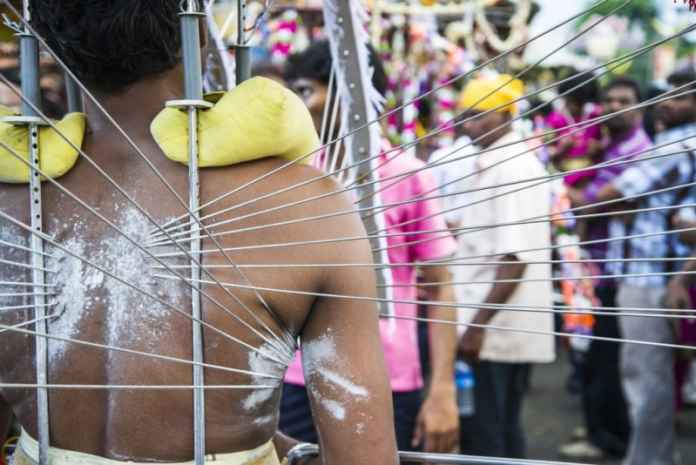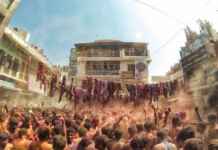Thaipusam is a festival, which is annually held each year during the full moon in the tenth month of the Hindu calendar, also known as Thai. The word Thaipusam is a combination of two words- the name of the month – Thai, and the name of a star – Pusam. This particular star is at its highest point during the festival. According to the Gregorian calendar, Thaipusam falls from mid-January to mid-February.
Rich legends lie behind the origins of Thaipusam but almost all of them agree on the fact that the festival is a thanksgiving to Lord Subramaniam, also known as Murugan. As per one legend, a demon named Tharakasuran was troubling rishis and saints. Lord Muruga, the son of Lord Shiva and Parvati was called to destroy the demon. Lord Muruga set off with the blessings of his parents, carrying twelve weapons and hence destroyed Tharakasuran in the month of Thai and hence Thai Pusam came to be celebrated.
Another popular narration suggests that Agasthya, instructed his student, Idumban to uproot two hills called Sivagiri and Shakthigiri belonging to Lord Murugan. Iduman performed the task as instructed and was ready to fly back. However, Lord Murugan wanted to test Idumban’s devotion to his master. He transformed himself into a small child and stood atop one of the hills. Suddenly Idumban couldn’t carry the hills anymore. When he saw the boy on the hill, Idumban humbly requested the boy to get down. The child refused and Idumban resorted to attack him, only to find himself falling like an injured bird.Lord Murugan was impressed by Idumban’s courage and determination. He blessed him and proclaimed that henceforth, those who carried kavadis to see him, would receive his blessings. The kavadis symbolize the hills of burden that Idumban shouldered, a physical burden through which the devotees implore for help from the God Murugan.
Devotees start preparing for Thaipusam by cleansing themselves through prayer and fasting approximately 48 days before the main festival. Kavadi-bearers perform elaborate rituals at the time of assuming the kavadi and offering it to Murugan. They are usually dressed in orange and yellow clothing as a part of the ceremony. On the day of the festival, devotees shave their heads and undertake a pilgrimage while carrying various types of kavadi, which usually involves carrying a pot of milk, held by some part of the human flesh. KavadiAttam is a dance, often performed by the devotees during the ceremonial worship of Murugan, to emphasize debt bondage.
Though celebrated mostly by the Tamil community, Thaipusam is a public holiday in Malaysia. Though offerings are made to many different shrines across the world, the most famous shrine of Lord Murugan is at the Batu Caves. The Batu Caves is home to a massive 42.7-metre statue of Lord Murugan, also known as Lord Subramaniam, which was unveiled in the year 2006. Devotees climb a staircase of 272 stone stairs into the limestone of Batu Caves, where the shrine is housed.
Thaipusam is an interesting ritual, celebrated to commemorate Lord Murugan!










